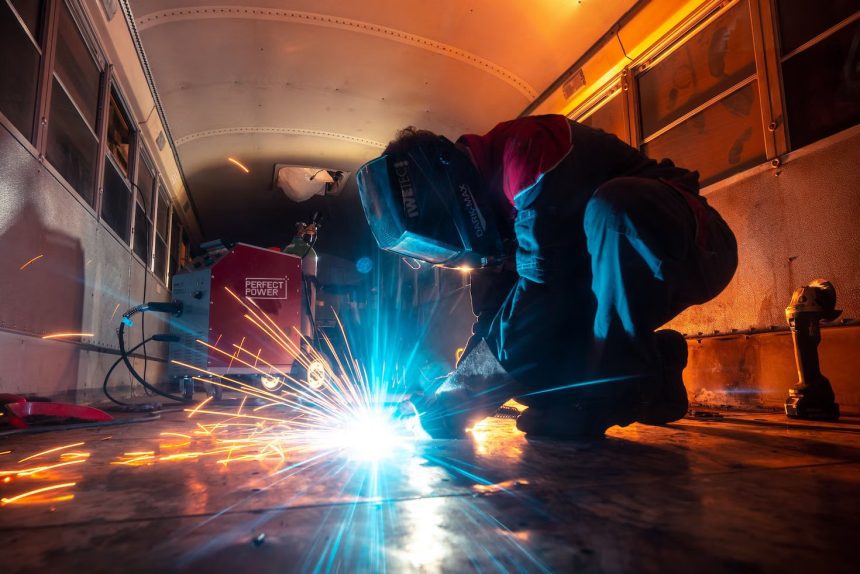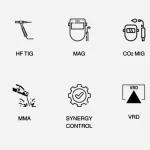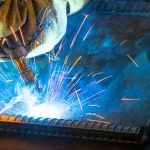Putting to practice any of these 11 tips is likely to improve the quality and durability of your weld. Tips include keeping the arc up front and keeping your stickout short.
Putting to practice any of these 11 tips is likely to improve the quality and durability of your weld. Tips include keeping the arc up front and keeping your stickout short.
Welding Town
1. Clean, Clean, Clean
The number one failure of a MIG weld is porosity. The most common cause of porosity is welding a dirty, oily, painted surface. All these contaminants get trapped in the weld, resulting in holes that resemble a sponge. “Farmers too often fail to adequately prepare the metal before welding,” says Miller Electric’s John Leisner. “This includes grinding or removing paint, rust, dirt, and other surface contaminants and also fully grinding out cracks, oftentimes beyond what is immediately visible.”
2. Get a Great Ground
Collier considers this the most common failure with MIG welding. “Your welder doesn’t care if you have a bad ground. It just keeps pumping out welding wire anyway no matter if your gun is sputtering and stuttering,” he explains.
Lincoln Electric’s Karl Hoes says a welding arc requires a smooth flow of electricity through a complete electrical circuit. Welding current will seek the path of least resistance. So if care is not taken to place the welding ground close to the arc, the current may find another pathway. Firmly attach the clamp to bare metal as close as possible to the arc.
3. Keep Your Stickout Short
As a general rule, keep the distance the wire sticks out from the end of the gun’s contact tip to between 1/4 and 3∕8 inch. “This simple tip can have the biggest effect on your MIG welding,” says Jody Collier.
4. Use Both Hands
“Use both hands whenever possible,” Collier urges. “Rest the crook of the gun neck in one hand and hold the part with the trigger in the other hand. Don’t hesitate when it comes to having your prop hand close to the weld. Get a heat-resistant, heavy welding glove if you need it.”
5. Listen To Your Welder
Music to your ears should be a steady buzz while welding. A steady hiss can indicate your voltage setting is too high, notes Leisner. “A loud, raspy sound could indicate the voltage is too low. A crackling sound like a machine gun going off indicates too high an amperage setting,” he adds.
6. Keep The Arc Up Front
“For better penetration, keep the arc at the leading edge of the weld puddle,” says Collier.
The exception to this rule would be when welding thin sheet metal. In this case, keep the arc back farther in the puddle to prevent burn-through.
7. Match Drive Rolls, Gun Cable Liner, Contact Tip to the Wire Size
Surprisingly, this basic matching up is often ignored. If you are trying to run .030-diameter wire through .035 rolls, you will find yourself constantly changing feed speed and never getting that setting right, as the grooves on the rolls are too large. The same advice applies to the gun cable liner and contact tip size.
8. Push or Pull
The most common method is to push the gun toward the direction of the weld (the forehand method). Forehand welding produces shallow penetration with a flat, wide, smooth surface.
The second approach comes when you drag the gun (the backhand method). This produces a deep penetration weld that is narrow and high in the center.
So what method should you use? That depends on the thickness of the metal you are welding and how deeply you need to penetrate the weld.
9. Watch When Welding Out of Position
If you are welding vertically, horizontally, or overhead, “keep the weld pool small for best weld bead control, and use the smallest wire diameter size you can,” says Leisner.
10. Replace Contact Tips Liberally
“Contact tips are cheap,” says Collier. “Keep a pack in your toolbox and replace them often.”
Worn contact tips are typically oval and lead to an erratic arc. Also, if a tip enters the molten weld pool, it should be immediately replaced. For most casual welders, a good rule of thumb to assure high-quality welding is to change the tip after consuming 100 pounds of wire.
11. Read Your Bead
You can learn a lot by looking at your finished welding bead, says Leisner.
A convex-shape or ropy bead often indicates that your setting is too cold for the thickness of the repair and there isn’t enough heat being produced to penetrate the base metal. A concave-shape bead indicates a problem with heat input.











